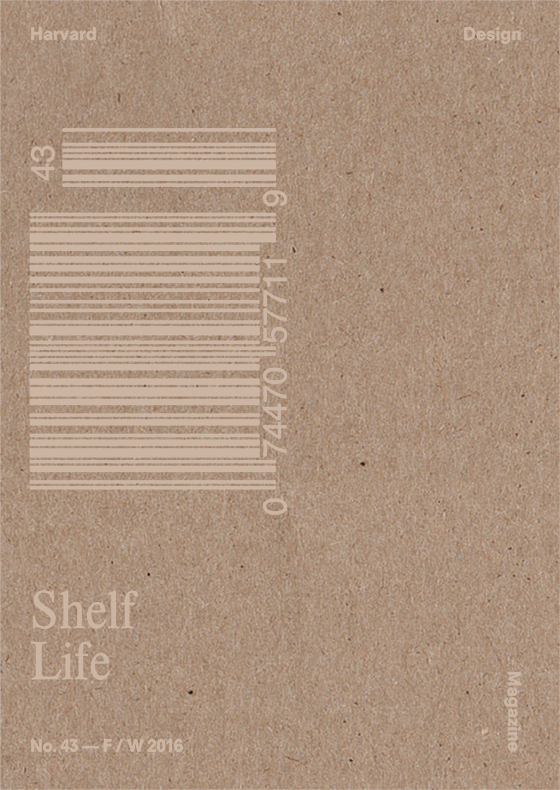Before BILLY: A Brief History of the Bookcase
43: Shelf Life

The more stuff we accumulate, the more space we need to store it all. Vast portions of the landscape are claimed and governed by spaces of storage, their maintenance, and the goods that move through them—or remain buried within them indefinitely.
This issue of Harvard Design Magazine investigates and unpacks the contents, containers, and systems of storage that organize our world.
Storage is the aggregation and containment of the material and immaterial stuff of culture; but also the safeguarding—or hoarding—of energy and tools for some imagined future purpose. How does all this stuff mask or overcompensate for economic and ecological bankruptcy? Is storage about greed or need? Storage, perhaps, is everything we can live without but insist on living with.
“Shelf Life” explores what’s inside the box (shed, tank, urn, vault, crypt, crate, case, pot, bag, vat, morgue, safe, bin, archive, warehouse, cabinet, cellar, cemetery, depository, locker, freezer, landfill, library). Even as we attempt to reduce and recycle, the stuff that we dispose of also needs to be stored. Where do we put it? Our planet is now a saturated receptacle. This warehouse is full, and we’re all inside it.
Jennifer Sigler
Martti Kalliala
Kersten Geers
Femke de Vries, Joke Robaard
Brian Evenson
Emily King
Anna-Maria Meister
Jonathan Olivares
Barry Yourgrau
Antonio Furgiuele
John May, Zeina Koreitem
Bryan Finoki
Shannon Mattern
Alex O’Briant
Mark Mulligan
Kiel Moe
Peggy Kamuf
Andrew Holder
Megan Panzano
Clare Lyster
Mimi Zeiger
Anupama Kundoo, Ateya Khorakiwala
Martin Roth, Mohsen Mostafavi
Christina E. Crawford, Darra Goldstein
Alex Kitnick, Tom Burr
Armin Linke
Fabrizio Gallanti
Craig Robertson
Benjamin Leclair-Paquet
Ateya Khorakiwala
Jesse LeCavalier
Daisy Tam, Melissa Cate Christ, Tomas Holderness
Susan Nigra Snyder
Hi’ilei Julia Hobart
Peter Galison, Robb Moss
Jesse Connuck
Lynn Spigel
Kate Orff
Samuel Medina
DESIGN EARTH
Jacob Lillemose
Rory Hyde
Maira Kalman
Jacques Herzog
Rhonda Ganz
David Zielnicki
Editor in Chief
Jennifer Sigler
Deputy Editor
Leah Whitman-Salkin
Publications Coordinator
Meghan Ryan Sandberg
Creative Direction & Design
Jiminie Ha, Fahad Al–Hunaif
With Projects, Inc.
Editorial Support
David Huber, Gina Ciancone
Proofreader
Rebecca McNamara
Printer
Die Keure, Belgium